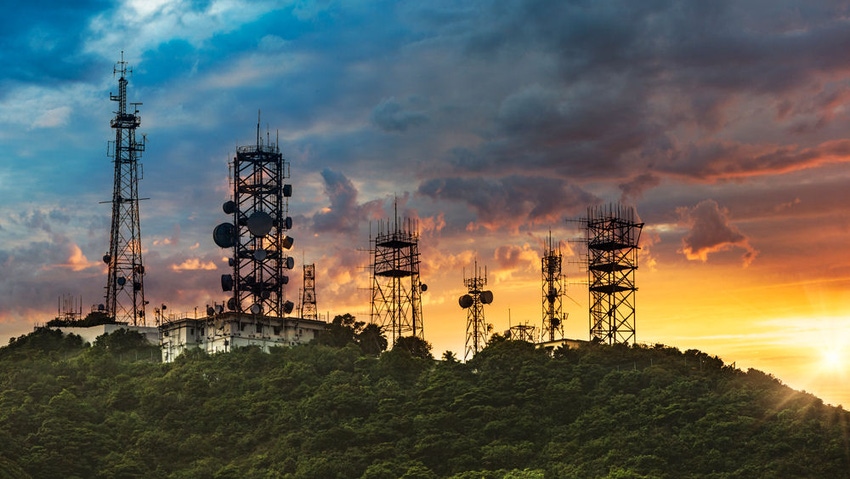European telcos lead on emissions, but Asia-Pac and China offset gains
Telecoms operators in Europe are outperforming their peers in terms of reducing emissions, while providers in China and the Asia Pacific are letting the side down a bit, according to a new report from the GSMA.
February 28, 2024

Green issues, specifically around carbon emissions, have been top of the agenda for operators and vendors for the past few years, with many of the big names publishing net zero targets and using any and every opportunity to cram the sustainability angle into their public announcements. The new study from the GSMA, dubbed Mobile Net Zero 2024, State of the Industry on Climate Action, the fourth of its kind, gives us some idea of how they are getting on.
The industry body's headline finding is that European operators are leading the way. Operational emissions in Europe fell by half in the 2019-2022 period, with some telcos getting a special mention for exceeding that 50% level; Tele2, Telefónica, Telenor, Telia and Vodafone all achieved deeper reductions.
To put that figure in context operational emissions globally fell 6% between 2019 – when the GSMA committed to a net zero by 2050 target – and 2022. The industry body describes that as "positive progress" and notes that it was driven by substantial reductions in most regions, Europe being on top of the pile.
Operational emissions – also known as Scopes 1 and 2 – cover direct emissions from owned and controlled sources, such as a vehicle fleet for network maintenance or diesel generators to operate base stations, and indirect emissions from purchased energy for base stations, data centres and other buildings.
North America also performed well, with operational emissions falling by around 30% over the period, as did Latin America, where TIM Brasil and Telefonica got a shout-out for driving a 22% reduction. And Turkcell was credited as the main orchestrator of a decline of around a fifth in emissions in the Middle East and North Africa (MENA).
However, emissions from operators in Greater China rose by 3% and those from the Asia-Pacific by 10%. While those numbers are not huge, the relative sizes of those markets mean there is a significant impact on the overall figures.
And that makes it more challenging for the industry as a whole to reach its targets.
As the GSMA points out, the science-based pathway for the mobile sector includes a goal of reducing emissions by 45% by 2030 from a 2020 baseline. To get there, emissions across Scopes 1, 2 and 3 – the third covers the value chain – need to fall by an average of around 7% a year between now and 2030, the GSMA said.
Given that the figure for reductions in Scopes 1 and 2 only was at 6% in 2022, you could argue that the industry is not on track to reach its goal, but the GSMA stopped short of saying that and instead adopted a tone of optimism.
"While this appears challenging, recent progress shows this is within reach," the report reads. It points out that the target reduction rate for operational emissions was exceeded for the past three years in Europe (21% per year), North America (11%), Latin America (8%) and MENA (8%). But it kicks the can down the road on Scope 3, citing the need for improved data and further analysis to better understand Scope 3 trends.
It was also too polite to call out those markets where emissions have risen and willingness to disclose environmental data and commitments to net zero targets are much lower than elsewhere in the world, China being the biggest laggard. Firm representing just 2% of mobile connections in Greater China have set science-based targets and committed to the net zero target, compared with 84% and 76% respectively in Europe.
"The evidence shows that the mobile industry's commitment to net zero by 2050 is paying off. Despite surging demand for connectivity and data, the global carbon emissions of operators continued to fall," said John Giusti, Chief Regulatory Officer at the GSMA.
The number of mobile connections globally rose by 7% between 2019 and 2022, and Internet traffic more than doubled, the GSMA said. As such, the industry's carbon reductions were mainly driven by energy efficiency and the use of renewable energy.
"Although we see the strongest early lead from Europe in the race to net zero, and encouraging progress in the Americas and MENA, this is a race that everybody needs to win – or else we all lose," Giusti said, assiduously avoiding naming those trailing markets.
Read more about:
MWC 2024About the Author(s)
You May Also Like








.png?width=300&auto=webp&quality=80&disable=upscale)


_1.jpg?width=300&auto=webp&quality=80&disable=upscale)


.png?width=800&auto=webp&quality=80&disable=upscale)